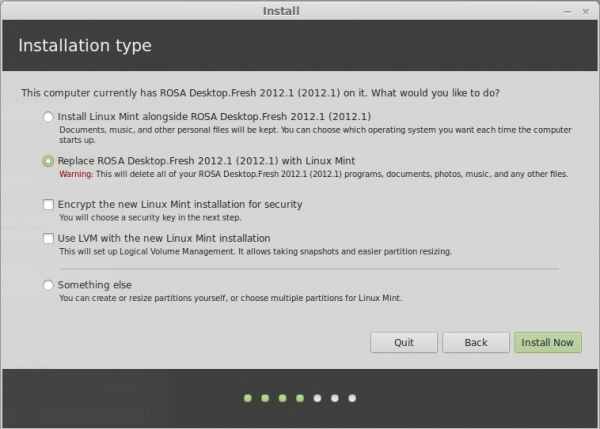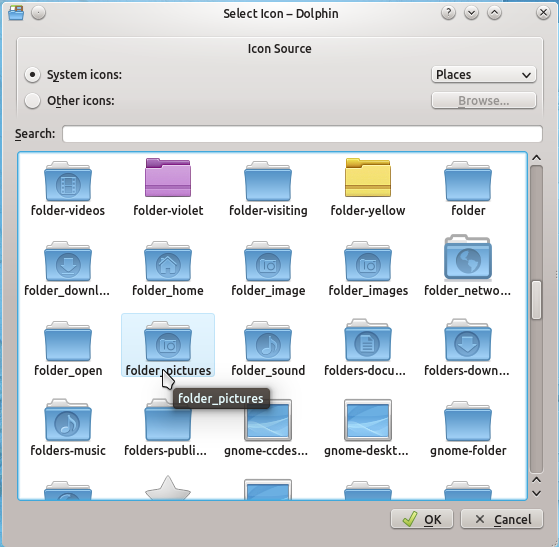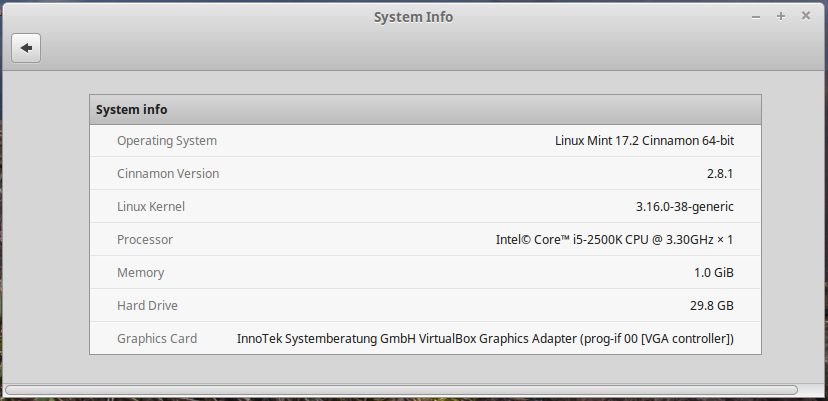Software Manager: This is graphical interface for managing applications on Linux Mint. For new users, it is a more user-friendly interface for installing applications, more so than using apt-get, the command-line client.
In this latest edition of Linux Mint, the software Manager did not see any improvements, but that still does not take anything away from its user-friendliness. Whether you are using the MATE or Cinnamon editions of Linux Mint 15, you get the same graphical application manager. The main interface is shown below.

The Software Manager has often been criticized as too slow to load, and it is still slow to load, compared especially to Deepin Software Center of Linux Deepin. Overall, it is still faster than Apper, the graphical package manager of Fedora.
A new graphical management application that made its debut in Linux Mint 15 is the Software Sources manager. It provides a unified interface for managing various aspects of the repository; from adding or removing repositories, to managing authentication keys. With this tool, it is no longer necessary to use add-apt-repository to add a Personal Package Archives (PPA) from the command-line.

A problem I observed with Software Manager is that when the Software Sources window is open (from Edit > Software Sources), then closed, Software Manager crashes, and then restarts automatically. This is reproducible every single time on the MATE and Cinnamon editions. Interestingly, when both windows are open, you can close Software Manager and the Software Sources window still remains open.
The other side to the crashing of the Software Manager is that no bug reporting tool is automatically launched to make it easier to file a bug report. On Fedora, when an application like that crashes, abrt-gui, a graphical interface to abrt (Automatic Bug Reporting Tool), is started automatically. In Linux Mint 15, the package is not even in its repository. But whoopsie, a bug reporting application that works similarly to abrt, is in its repository, but not installed. In Ubuntu (13.04), Linux Mint’s parent distribution, that bug reporter is installed and running. Sometimes I think that there’s a good reason distro developers switch off certain features. However, in this case, I can’t think of a good reason why whoopsie is not installed and configured.
Security Profile: All Linux Mint 15 editions – MATE, Cinnamon, KDE, and Xfce, have the same security profile and posture. Aside from the physical security features which was discussed earlier in this review, they also have the same network security posture. The firewall application, ufw, is installed and the daemon running, but the firewall is not enabled.
For managing the ufw firewall, there is a graphical interface called Gufw, which is not installed, but is in the repository. Once installed it just has to be enabled and you have a simple interface for managing the firewall.

Though ufw and Gufw are easy and simple to use, I found that a more powerful firewall application is in the repository. This application, called Firewalld, is the new (as of Fedora 18) firewall application in Fedora. Firewalld brings a lot more features to the table than ufw, and firewall-config, its graphical interface, is more feature-rich than Gufw. I’ve been able to replace ufw with Firewald in Linux Deepin and Linux Mint 15 Cinnamon. So far, I’ve not observed any problem(s) wit both installations. (See How to customize Linux Deepin 12.12 and How to replace Ufw with Firewalld in Linux Mint 15.)
Aside from the firewall, there is not other network security management application installed, even though packages for the 3 application-level “firewalls” for Linux distributions are in the repository.
New desktop environments like Cinnamon and Depth (Desktop Environment) of Linux Deepin appear to have started what could be termed fragmentation in the desktop environment space. However, I don’t think it’s going to be as bad as the fragmentation of Linux distributions that diluted the talent pool available to so many Linux distributions, giving us hundreds of distributions that don’t bring anything new to the table. With the new desktop environments, of which Cinnamon is about the most popular, I see a lot of new ideas and new feature being brought forward.
If you are using Linux Mint 15 Cinnamon, you can already see some of those features in the graphical management applications that have been coded with non-geeks in mind. And this is what we should be rooting for, which is why Linux Mint is one of my favorite distributions, never mind the poor security posture that it presents out of the box.
Resources: You may download installation images for Linux Mint 15 Cinnamon and MATE from here. The Release Candidates for the KDE and Xfce editions have also been released. They are available for download from here (Xfce edition) and here (KDE edition).
Screen Shots: View more screen shots from my test installations of Linux Mint 15 Cinnamon.
Linux Mint 15 Cinnamon Desktop showing the entries in Firewalld’s firewall-applet context menu.

Next more screen shots of login screens that came with the system.
HTML BlackNBlue login screen.

HTML Fullmoon Login screen

GDM Greenery login screen.

GDM Autumn login screen.









I’m running Linux Mint-12. It is finally time for the “recommended” fresh install of a new Linux Mint edition.
As I write this in min-September 2013, should I skip Mint-15 and wait for Mint-16 or should I fall back to Mint-14.
~~~ 8d;-Dan
I think you are overdue for an upgrade. If you like Cinnamon, you should upgrade to 15.
Sad to see linux is starting to advertise on the bottom of the windows!
Installed but couldnt get to desktop because it kept restarting.
AMD 6790 / X2 5600+ / 4GB RAM
Very, very dissapointed.
Could be a hardware issue.
How can someone take excellent Debian and ruin it so much?
First (and last for me) error was in restart after installation:
“unable to connect to system bus: failed to connect to socket…”
After restart using case button it came almost to desktop and auto restarted…
Im so dissapointed – if this is the best Linux community can offer
(4. most used OS in the world!?!) than I`m doomed to Window$.
To start with, Linux Mint is based on Ubuntu, not Debian. And where did you get the “4. most used OS in the world” from? I hope you’re not going by that table on Distrowatch.
During the install process, is there an option to install the boot-loader to the ‘/’ partition super-block? The impression I got from the release notes is that the boot-loader is installed by default into the mbr (no option given to the user!). I do not want this since I am using a multi-boot system with legacy GRUB. I want to chain-load Mint-15 using legacy GRUB. Will appreciate a clarification on this issue.
Thanks in advance.
I’ve been using Mint 15 on my laptop from the time it came out to now, & I like it a lot. One thing you seem to have missed is the enhanced search feature in the Software Manager. You can now search for programs within software categories, which is a small but useful change. If you click on a category before you search a yellow strip appears at the top of the Software Manger & explains, while letting you search all categorizes if you don’t find what you’re looking for.
Early in the article, you mention install troubles on a store-bought, Windows-8 workstation. You attribute those troubles to MicroSoft’s business practices. While that might be the case, the troubles stem from the deployment of Unified Extensible Firmware Interface (UEFI) on the store-bought workstation. The UEFI web site states “The UEFI specification defines a new model for the interface between personal-computer operating systems and platform firmware. The interface consists of data tables that contain platform-related information, plus boot and runtime service calls that are available to the operating system and its loader. Together, these provide a standard environment for booting an operating system and running pre-boot applications.”
This effort exists as an attempt to make it more difficult for scum-ware and mal-ware to infect a workstation during the system startup processing. If the UEFI configuration, as shipped, says that Linux is naughty, the workstation balks. I’m not fan of the Redmond monopoly. It is a defect in UEFI deployment that is at fault regardless of the business practices and motives that may have created the defect.
~~~ 0;-Dan
I only run persistent Live USB, as a “coffee shop” wi-fi OS. On that basis, Mint 15 Cinnamon is slower on my machines than the earlier verions, while I’m very happy with Mint 15 XFCE. Cinnamon is an elegant desktop, but users should know that this edition is on the new Ubuntu 9 month support cycle. I don’t partition my hard drive for a 9 month install.
This has been the worst distro I have ever used, 15 is horrible.
Having a load of incompatibility problems, system locking up entirely, crashing of the DE, complete infinite loops making the system work overtime. Even the new software source manager likes to crash part way into the pinging of servers.
The icons are hideous and the scaling of the icons just do not look appealing. When using a high density display, they’re amateur looking.
This repulsive distro even has quite a few worse points than the one it’s based on, Ubuntu.
I wonder if they have a QA team.
Hmm, Chris, sorry to hear you’ve had a bad go of it. I’ve found Linux Mint 15 superb… and I’ve used the last few Mints (and I’ve had about 9 years running Ubuntu desktops and servers, too). Best of the recent bunch in my opinion, and the previous ones have been pretty impressive too despite being somewhat half-baked during the Gnome3 transition (now largely resolved with Cinnamon and MATE)…